Link building is not an SEO strategy only for B2Bs and SaaS companies. A photographer like you can also use it. I’ll show you how in this blog post.
This piece will be straightforward — no time-wasting with SEO basics.
Nonetheless, I’ll run through a short recap to get you up to speed before I discuss the steps you need to master building backlinks as a photographer.
Recap on Link Building & Search Engine Optimization
What Is Link Building?
Link building means getting backlinks from other websites to boost the authority of your own site/posts.
What Is Photography Link Building?
Photography link building still means building backlinks. The only difference is that your target websites must be related to the photography niche.
Why Are Backlinks Important to Photographers?
Backlinks are crucial to digital marketing. They are authority votes that bots use for search engine rankings.
Also, links form the basis of how search engines work. So, mastering how to build high-quality backlinks is a no-brainer for any photographer.
Now, let’s dive into the practical of link building for photographers…
10 Ways to Build Backlinks for Photographers
I sorted the strategies from easy to difficult. If you already know the basics, skip to the latter parts.
Also, you don’t need to be an SEO guru to replicate the backlink building strategies below. Several of them are DIYs.
Get Listed on Local Directories
98% of consumers Google search information about local businesses. One of the places they (consumers) look is a directory. That is why you must list your photography website on one.
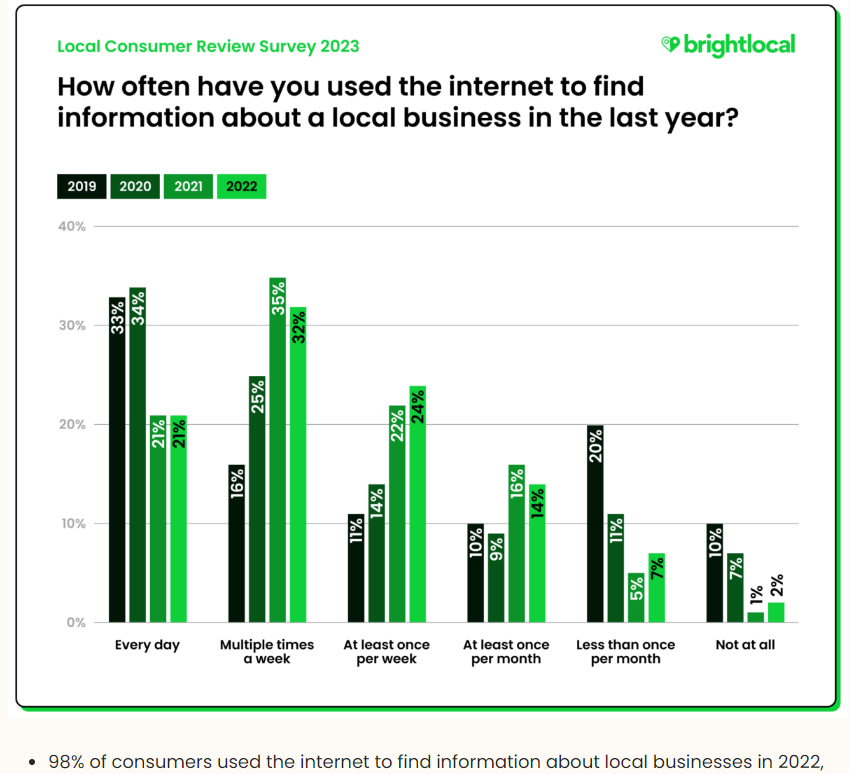
Wait, is photography even a local business?
Yes, when you compare it to SaaS (Software as a Service) and B2B (Business to Business) firms.
And mind you, that doesn’t mean you must own a brick-and-mortar office.
In contrast, you might travel out of state even as a photographer. Nevertheless, your customers are likely people within your city. Hence, the local business category.
So, how can you list your photography website in a local directory?
- There’s no point listing your photography services in a general directory. Look for the super-niched ones.
- Go to Google > type “niche” photography directory city into the search bar
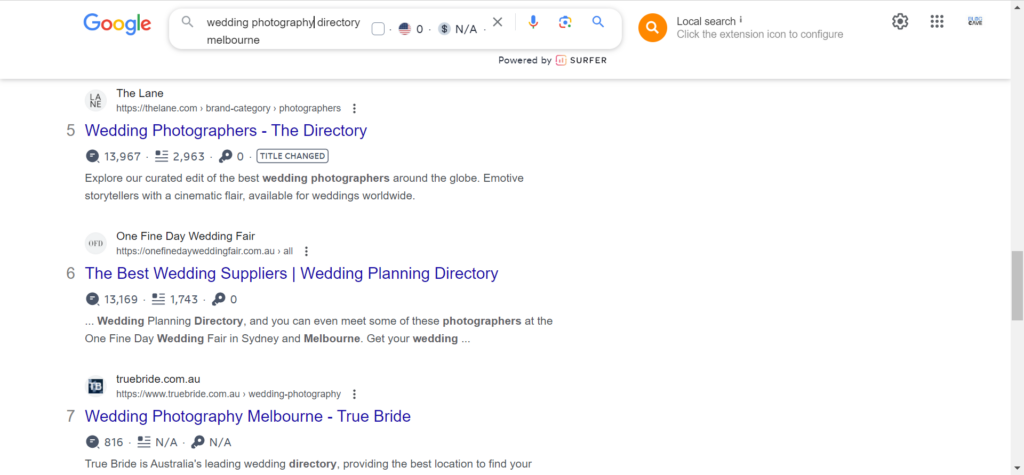
- Pick the directories with desirable traffic — download the Surfer Keyword extension for that; it is free. Also, check the domain authority.

- Filter the search results for the best 3 directories — best means non-spammy, natural-looking sites. In the case of this example, those are “True Bride,” “The Lane,” and “One Fine Day wedding fair.”
- Send a straightforward outreach message to the directories of choice. Here is an example:
Hi [name],
I read your list on wedding photography in Melbourne [hyperlink to it]. I’d like to know how to list my business there.
Here is a quick brief about my business:
- Provide the number of clients serviced,
- Sample reviews from authority customers and
- Add a link to your website
Looking forward to your reply.
Don’t limit your business listings to local directories. Get on global, high-quality websites like Behance, Weddingwire, or similar big shots in your niche.
Upload Pictures to Stock Image Sites
Are you familiar with free stock image sites like Unsplash, Pixabay, and Pexels?
Do you know you can upload or submit your photos on such sites to gain backlinks?
I understand you might have issues with sites like Unsplash when you can upload similar pictures on iStock and get paid.
But to get backlinks, let’s stick to free sites. And besides, you don’t have to upload your masterpiece photos.
Instead, upload pictures around common themes like wedding gifts, locations, and wines.
That said, how does this backlink strategy work?
- For a start, Unsplash, Pixabay, or Pexels are not the target websites.
- The target is the bloggers and authors who come to those sites to download free images.
- When they (bloggers and authors) use your pictures, you’ll likely get a mention (backlink) in their articles.
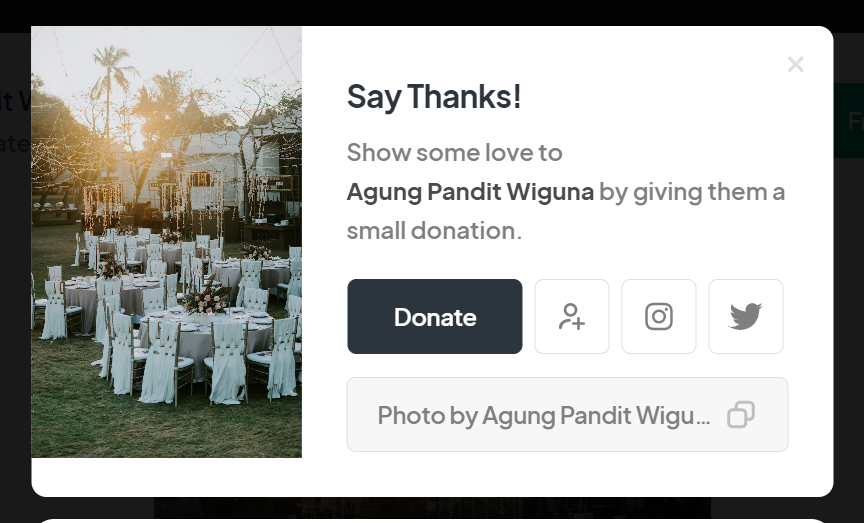
Does this strategy count?
Short answer: yes!
If a blogger goes an extra length to get quality pictures, the article will be as detailed. In other words, the blogger is thorough and links to their sources.
More importantly, such thoroughness will boost the ranking of the article. In the end, you’ll get free backlinks on high-ranking content not from one but many bloggers.
So, yes, this strategy works.
What if a blogger uses your pictures and mentions you but doesn’t link back to you?
Do this:
Target and Track Brand Mentions
To get brand mentions, you must already have some popularity. That could be from being the best photographer in the city, putting out free resources, or networking with fellow photographers.
Either way, you’re known in your niche. Otherwise, you won’t earn a brand mention.
Now that we have established the basics, how do you target and track brand mentions for gaining backlinks?
📌 First, find the unlinked brand mentions. There are generally two methods for that:
Manually with Google
- Go to Google > type your brand name in quotation marks into the search bar
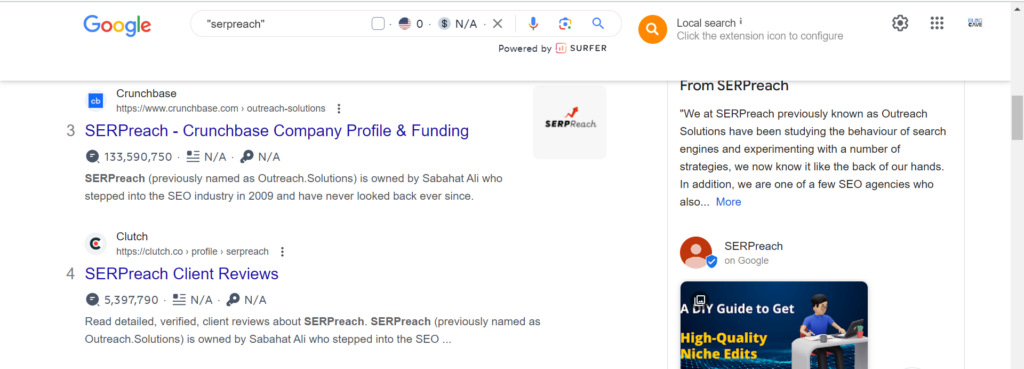
- Alternatively, you can do site-specific search. Type <site:”sitename” “your brand name”> into Google.
- Lastly, you can limit your search to blogs. Type in <inurl:blog “your brand name”> into Google
While the manual methods are free, it is time-wasting. Also, you can’t confirm if the mention is linked or unlinked without checking all the search results.
There is a better method — using tools.
Using tools
- Ahrefs Content Explorer
- BrandMentions — recommended; you can see unlinked mentions within a few clicks.
📌 Secondly, connect with the author of the article.
- Follow the author on social media, react to their posts and stories
- Then, send your personalized pitch. Here is an example:
Hi [name],
I love the writing style and tone in [the title of the article]. I noticed you mentioned my brand there. Thanks, mate.
However, you didn’t link back to my site. I’d appreciate a backlink if it’s not too much to ask. Thanks.
I have other pictures that are even more fitting for the article. Let me know if you’d like to take a look.
— Regards
📌 Lastly, don’t only track existing brand mentions. Set alerts for future ones on other sites — use Google Alerts or BuzzSumo
Pro tip:
You can also track keywords instead of just brand mentions. Find low-hanging keywords, target them, and explore them for valuable backlinks.
What if an author once linked to your site, but it’s now broken?
Do this:
Broken Link Building for Photographers
Either by mistake in HTML tags or deleted pages, broken links are BAD for user experience. They might deter your performance on search engine results pages.
Besides, fixing your broken inbound links can unearth more link building opportunities.
So, how can you fix broken links?
You will need tools to check your website’s backlinks — Ahrefs or Semrush is nice. But I’ll use the former in my example.
Let’s get to it already.
📌 Before subscribing to Ahrefs. Confirm if you have broken links with their free tool.
- Go to Ahrefs Free Broken Link Checker > input your domain
- If this is your result, move on to the next strategy:
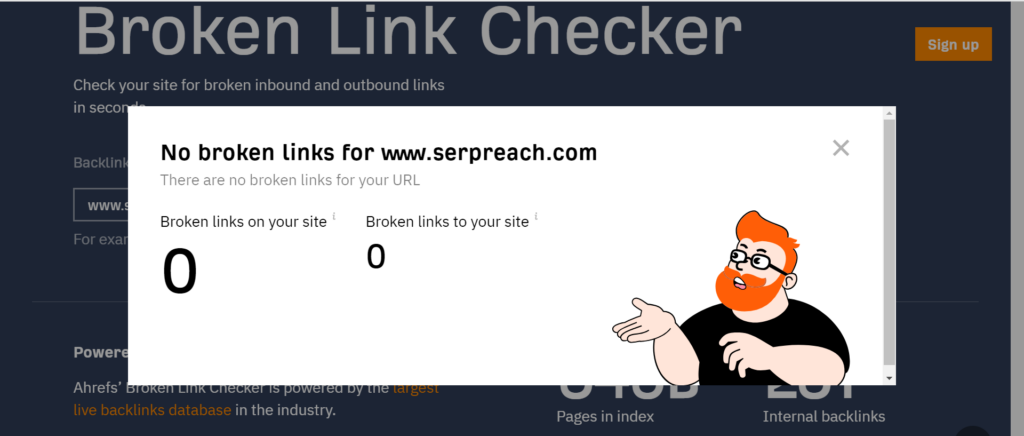
- On the other hand, if this is you, get the subscription and proceed with the steps below:
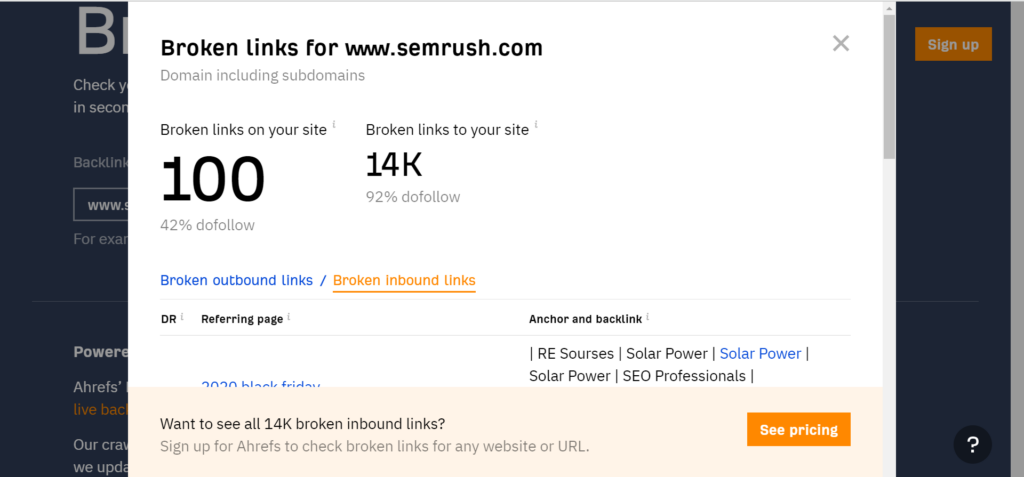
📌 Diving deep into broken link analysis
- Go to Ahrefs Site Explorer > input your domain > Pages > Best by links
- Apply the “dofollow” filter and change the HTTP code to “404 not found.”
FYI:
There is nothing wrong with nofollow backlinks. In fact, include them in your backlink strategy for diversity.
- Click “Links to page” to find the referring domains and pages linking to the broken link.
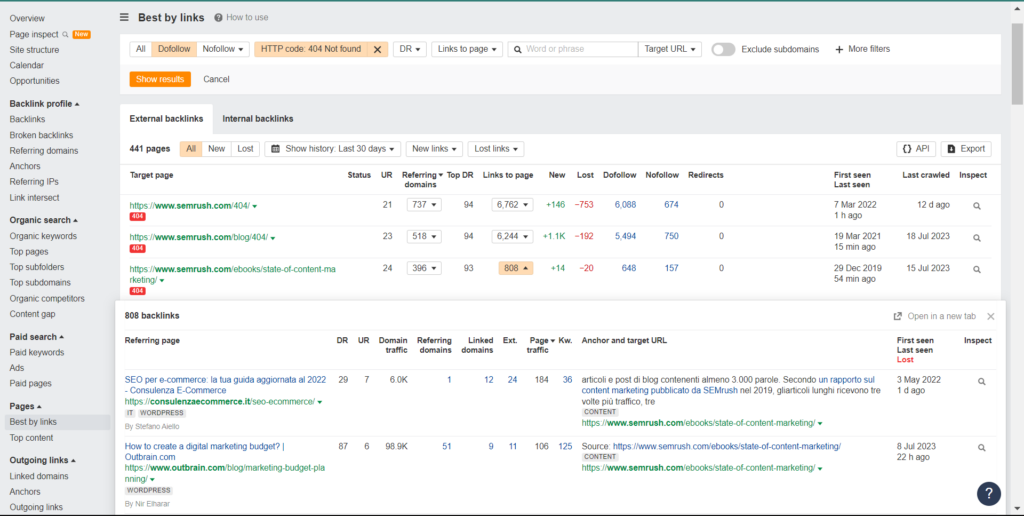
📌 Fixing the broken links
- Create the replacement page for the lost resources or fix the code error
- Redirect the old links to the new pages
- Reach out to linking pages about the replacement page.
Sample pitch to use:
Hi [name],
I noticed you link to my [title of article]. Thank you.
I recently updated the article with the latest findings and published it on a new page. Please take a look.
Also, I developed a free tool to locate photographers in Melbourne. Your readers might find it interesting.
Let me know if you’d like to give the tool a test.
— Regards
Note:
I only focused on broken links on your domain. You can also explore broken pages on external sites (but reputable websites) for backlinks. I wrote the steps needed for that in my broken link building article.
Get Links From Competitors’ Sources
The easiest way to build backlinks is to copy what your competitors are already doing. Of course, you don’t have to adopt the spammy parts or shady link exchanges.
Focus on the getting quality links back to your website.
Besides, if an authority site links to your competitors, the chances are that they will also link back to you — provided that you meet the requirements.
So, how can you get backlinks from competitors’ sources?
📌 First, identify your competitors at the domain and page level
For domain-level competitors:
- Go to Ahrefs Site Explorer > input your domain > organic search > organic competitors
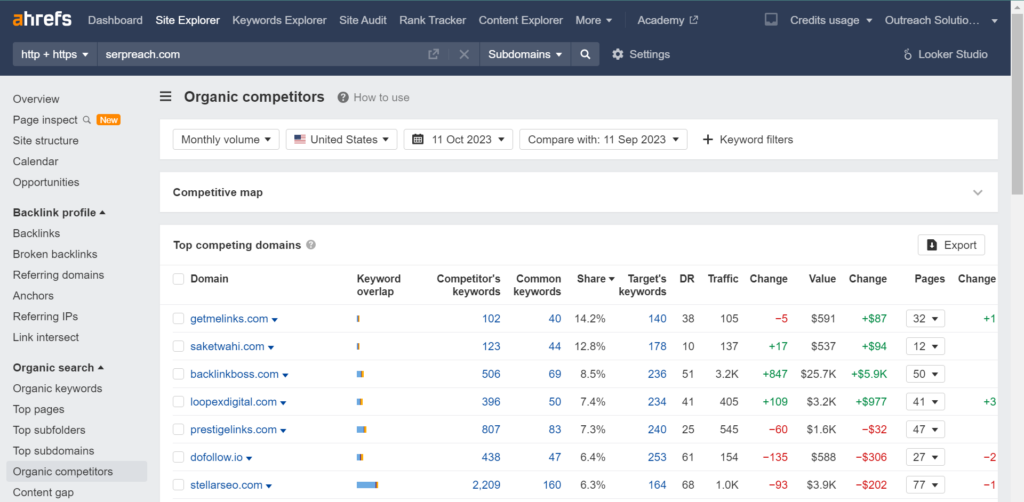
For page-level competitors:
- Go to Ahrefs Site Explorer > input your website URL > organic search > organic keywords > filter the result for the “top 10” position
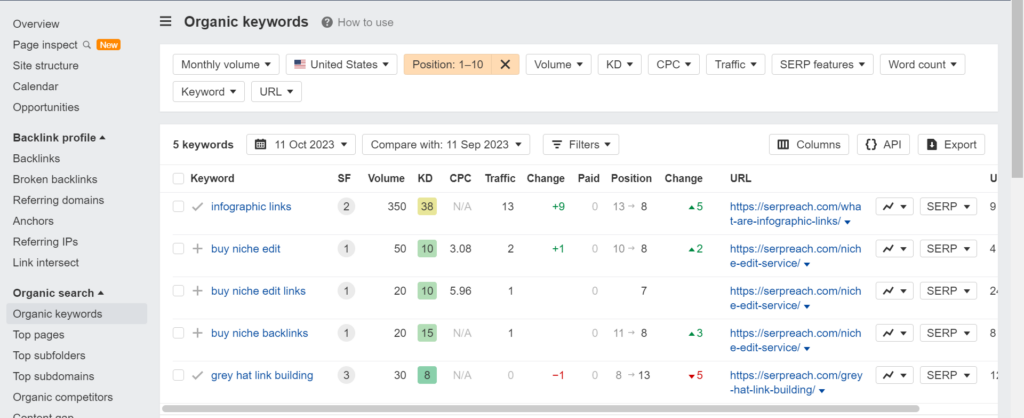
- Choose the best keyword rankings
- Insert the keywords into Ahrefs Keyword Explorer > SERP overview
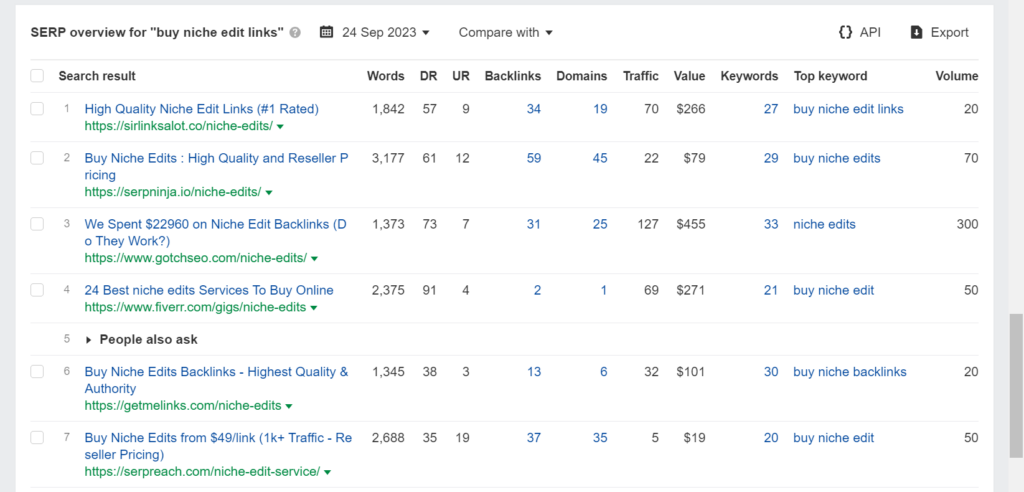
📌 Second, find the pages/domains linking to your competitors
- I explained the steps needed for this part in my competitor backlink analysis article.
📌 Lastly, reach out to the owners of the linking pages
Use this sample pitch:
Hi [name],
I read your piece on [title of article]. That was very insightful.
I wrote a similar post [hyperlink to the article] that analyzes feedback from firsthand users of Canon EOS R5. Perhaps you can link to it to enrich users’ experience.
What do you think?
Note:
Competitor backlink analysis also reveal how many backlinks you might need to outrank most websites in search rankings.
Participate in Photography Contests for Backlinks
Contests are not only vital for backlinks. They are also opportunities to showcase your skills, win prospects, or just for exposure. Plus, you can win a handsome sum of money.
Take the Australian Awards as an example. The prize money for the 2023 edition is $40K.
However, participating in just any contest won’t do. Only the niche-relevant ones will bring the desirable outcomes.
So, how do you find niche-relevant contests?
📌 Use Google
- Type <photography contests in [city]> into the search bar
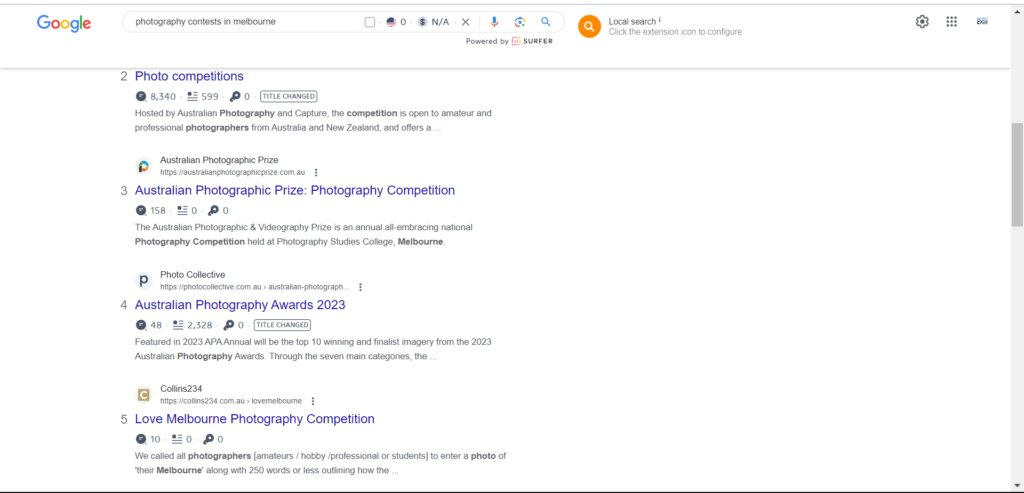
📌 Alternatively, check the popular photography magazines in your city. You’ll find openings for contests if any are available. You can also check on niche social media groups.
Next stop: let’s begin the process of participating in a contest.
- Submit your work to the contest committee; ensure you follow the rules.
- Check with organizers or committee members to see if they receive your submission.
- Regardless of the result of the contest, share the info across your social media platforms.
How does all that help you with backlinks?
- Contest organizers often write a post announcing top performers. And since several photographers will participate, that post will receive tons of backlinks — even from media houses.
- You’ll benefit from the free exposure and link juice if you get featured on such a post.
What if you don’t get to feature on the said post?
From practical experience, contestants who often post their links and exhibitions online get views and votes. And they often go on to win. But say you didn’t; the exposure and traffic can earn you an honorable mention.
Partner With Customers and Other Photographers
If you do a good job, customers will naturally recommend your services. Some might even add a short blurb-like bio with a link to your website.
But having only a few customers link back to you is not enough. Build a system where all of them send backlinks to your site. How?
- Create an outreach-reward system like this:
- Pitch customers that they will get a discount if they feature your pictures on their websites.
- Add an extra bonus if the feature includes a mention and backlink.
Here’s a sample message to use:
Hi [name],
Thanks for being an AMAZING customer for the past [x] years. [talk about your first photograph for the customer in a short sentence].
I’m offering 30% discounts on all shoots for customers who feature my works on their sites and link back to mine.
Learn more about the terms [hyperlink to a landing page]
Outside customers, you can also partner with other photographers. You can host local events — e.g., free training for beginners (young entrepreneurs). This will attract backlinks from media houses and other photography websites.
Also, you can join podcasts, interviews, and events. These mediums can also earn you the best backlinks: editorial links.
While you’re at it, consider creating a YouTube channel.
Furthermore, you can partner with influencers, e.g., the folks who model your shoots. They get free pictures. The least they can do in return is give you a shoutout.
Encourage the models to go beyond shoutouts. They should link back to your websites on their pages.
HARO Link Building
I’ve written an extensive article on how to use HARO for link building. So, I’ll keep this part short and straightforward.
More so, the steps to create an account on HARO are the same.
The only change peculiar for photographers when using HARO is the preference. You might need to change it to “lifestyle and fitness,” and “travel.”

In the long run, you need to upgrade your subscription. This is when you can set alerts for keyword-specific queries such as “photographer” and “photography.”
Guest Blogging on Sites Search Engines Love
Regardless of the rumors about guest post backlinks being spammy, they are some of the highest-quality, external links out there. But you must do it right: blog on sites search engines love.
What sites do search engines love?
📌 Niche-relevant sites — choose photography blogs that or sites that talk about directly-related topics, like weddings or birthdays
- Go to Google, type <photography + guest post> into the search bar
- Avoid directories. Instead, domains with a dedicated guest post submission page

📌 Authority sites — blogs with quality referring domains that rarely link to other web pages.
- Examine the selected websites on Ahrefs Backlink Checker.
- If a site’s outbound links are significantly more than inbound links, avoid it.
📌 Search-intent focused sites — blogs that deliver the information needed without fluff
- Pick 3 -5 articles on selected sites randomly.
- Check if the articles are high-quality and user-focused. Otherwise, it won’t matter if your post is a unicorn. The overall perception of the domain will suck out your efforts.
Once your research is complete, pitch site owners about your unique guest post idea. While you’re at it, enquire about the possibility of niche edits.
Lastly, always write quality content for your guest posts. If you post the article on your own website, don’t send it to another website.
Build Linkable Assets
Like the name, linkable assets naturally earn incoming links. They include free tools and resources (like reports or statistics pages).
Also, linkable assets can be long-form blog posts. Either way, creating an asset will boost your link building campaign.
The question now is: what asset should you create?
Short answer: monitor trends in your niche.
What do users want? More importantly, what are other photographers looking for?
Here is my shortcut:
- Visit Google Trends > input your root keyword > explore
- Scroll down to “related topics” and “related queries.”
- Change from “rising” to “top”
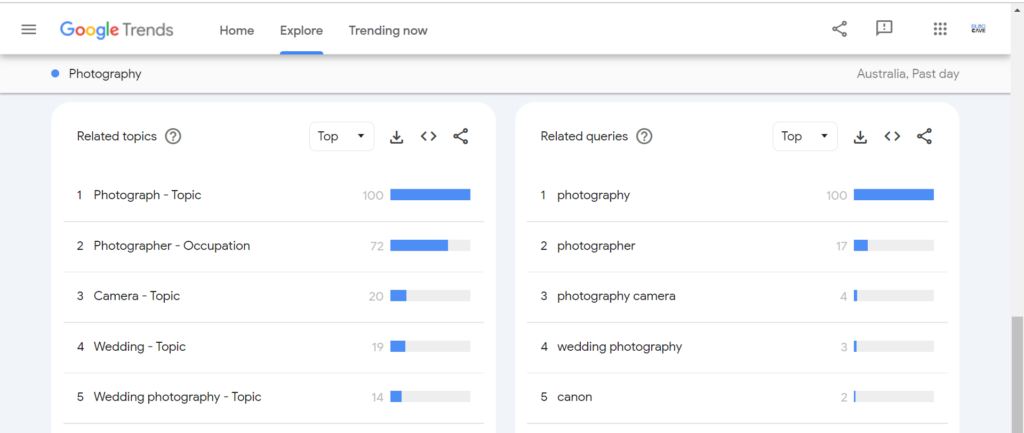
- Pick any of the relevant keywords and build your asset around that.
In this case, I’ll likely run with something like the “state of outdoor weddings in Australia. I’d interview photographers, recently wedded couples, and prospects and compile the findings into a statistics report.
Make Sure You Only Build Quality Backlinks
FYI: not all backlinks are good for your website’s SEO.
Whether guest posts, broken links, or contests, focus on building high quality backlinks to your website. Start with a few. Then, replicate the process until have hundreds of valuable links pointing to your photography business.
And it’s okay if you can’t build backlinks without help. You can always hire link builders.
But stick to link builders that understand the photography scene in your country. Then watch your website’s search engine ranking increase.

